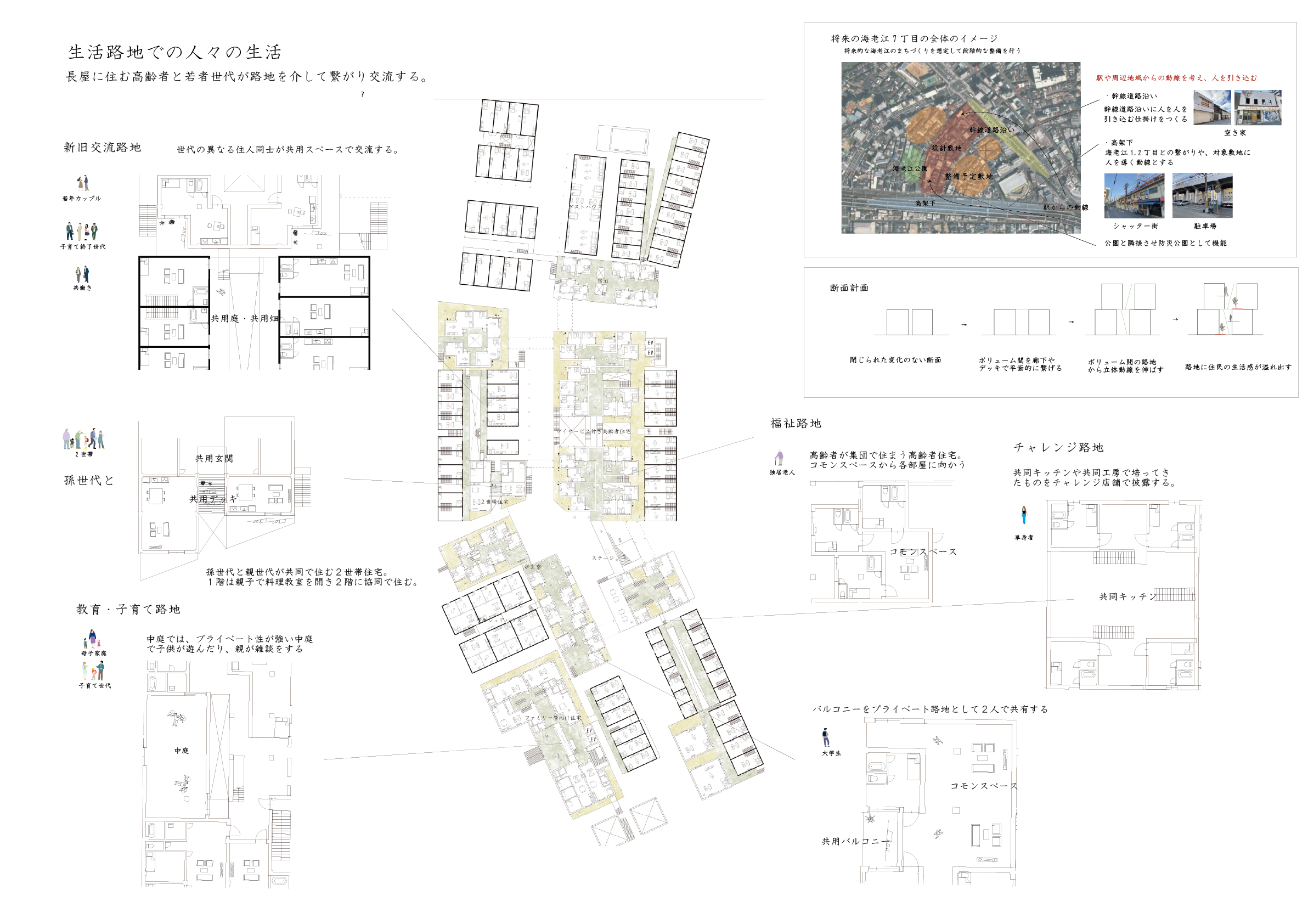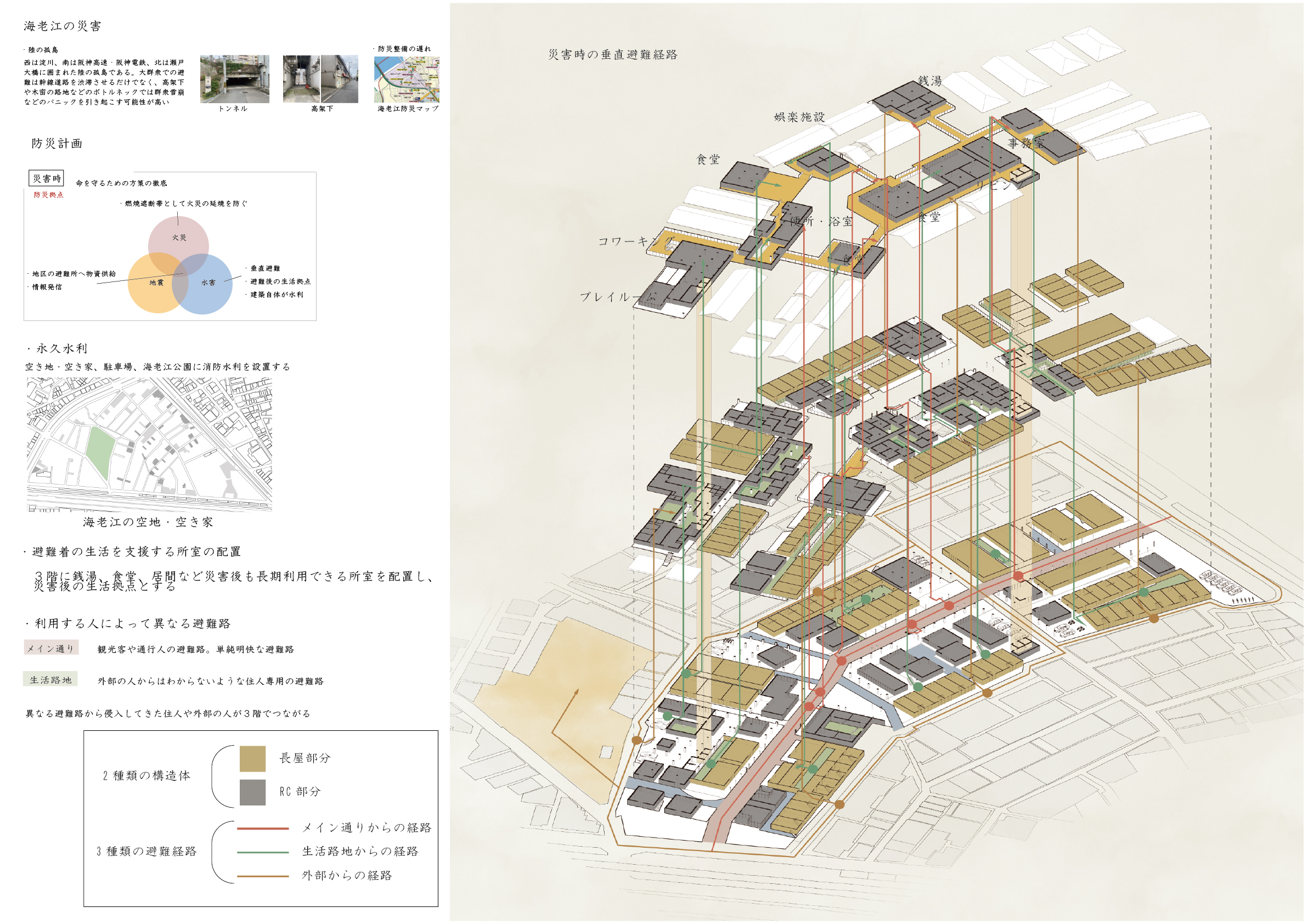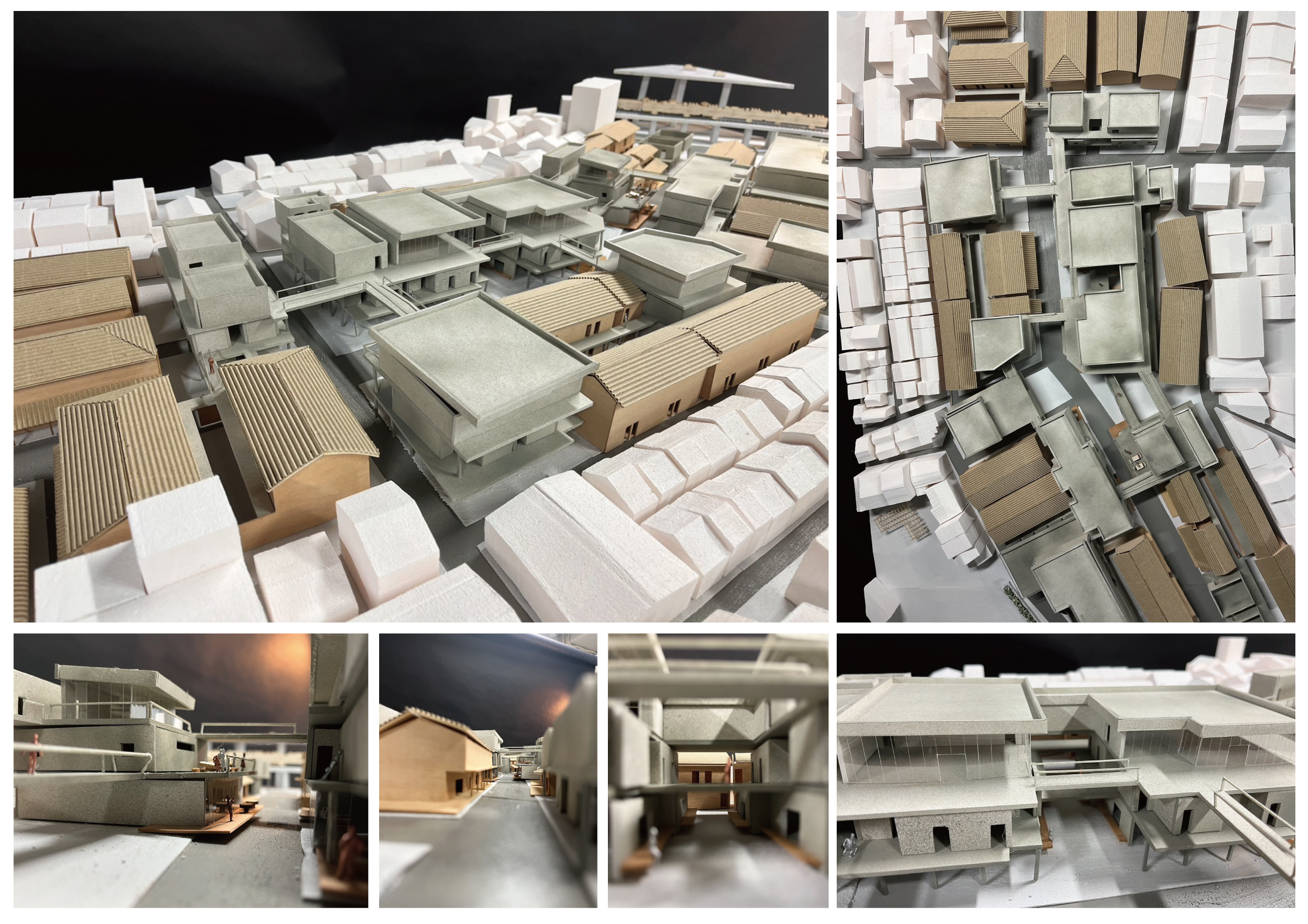不易流行 木密における路地を活かした都市居住の在り方 immutable epidemic -Urban Habitat Utilizing Alleys in Dense Wooden Urban Areas
沢田茉優 SAWADA MAYU
作品コンセプト
- JP
- EN
近年の日本における木造密集市街地の整備を進めるための事業は、「まちの更新」を基本前提とし、地域の空間特性への配慮の欠けた再開発が多く昔から受け継がれてきた路地、木造長屋などの空間的資源が消失している。一方で、都市部の密集市街地では生活の利便性が高いため高齢化が進みながらも、若者世代が流入し、まち自体に
新しい動きや活力が芽生えつつある。つまり、防災上多くの課題を抱える木造密集市街地は、緊急に整備を要する大きな都市問題であると同時に、居住都市としての可
能性を示しているとも言える。そこで木密の歴史的価値である長屋と路地を保存し利用することで、空間的資源やコミュニティを守りつつ、防災面の強化と都市型社会に適応する都市居住を可能とする職住一体型の都市型集合住宅を提案することで住人がライフスタイルを選択できる新たな木密整備の方法を模索する。
In recent years, projects to promote the development of densely wooded urban areas in Japan have been based on the basic premise of "renewing the town," and many redevelopments lack consideration for the spatial characteristics of the region, and spatial resources such as alleys and wooden tenements that have been passed down from the past have disappeared. On the other hand, in densely populated urban areas, the convenience of living is high, so while the aging of the population is progressing, the younger generation is flowing in, and the city itself
New movements and vitality are emerging. In other words, densely wooded urban areas, which face many problems in terms of disaster prevention, are a major urban problem that urgently requires improvement, and at the same time, they are not only viable as residential cities.
It can also be said that it shows competence. Therefore, by preserving and using row houses and alleys, which are the historical value of wood-denseness, we will search for a new method of wood-dense maintenance that allows residents to choose their lifestyles by proposing an urban apartment complex that integrates work and residence that enables urban living that is adaptable to urban society and strengthens disaster prevention while protecting spatial resources and communities.







